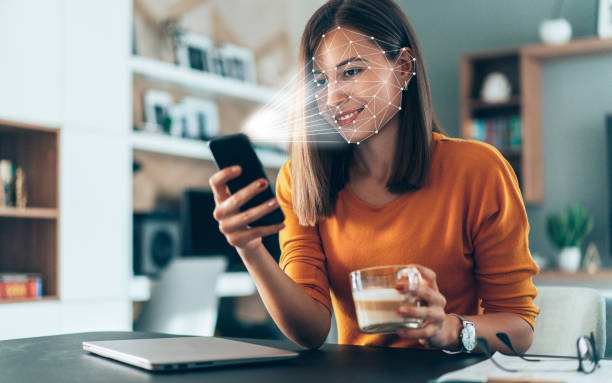Face recognition systems are becoming ubiquitous across industries due to their touchless nature and seamless working. It is easier to verify using a face ID check than fingerprint scanning. The demand for biometric and facial authentication is rising and is expected to cross $10 billion by the end of 2030. With so much potential 3D liveness checks prove to be the game changer regarding facial recognition. It is a relatively new technology that works with real-time presence ensuring complete security and reliability. This blog will discuss the importance of 3D liveness checks and present a guide for businesses to help them seamlessly incorporate this solution.
3D Vitality Recognition
Be sure someone is still alive before you conduct business with them. Fraudsters enjoy using compromised profiles to steal identities.
Our all-in-one liveness detection tool generates a URL that anyone on any smart device with a webcam can open. We enable more than 10 billion webcams and smart devices.
A brief video selfie is taken during the liveness session to record each person’s distinct facial biometrics and produce a 3D facemap. It takes two seconds to confirm if the person is alive.
Now that you are aware of their existence and physical presence, you must make sure you are speaking with the right individual.
What is a Liveness Check?
Liveness check is an additional layer of security that works behind face recognition systems. It is an AI-powered technology that checks for the real-time presence of humans by checking their movements and analyzing face data. It proves to be the first line of defense against all the prevailing cyber crimes such as spoofing attacks, deep fakes, masks and print attacks. The 3D liveness check system works by detecting liveness, ultimately strengthening the facial recognition system. There are two types of liveness check algorithms.
Active
Active liveness detection or active 3D liveness check necessitates some level of user engagement, such as following on-screen prompts like tilting the head or looking from side to side. Hybrid solutions cleverly blend both approaches, providing a visible but minimally intrusive solution. Due to their enhanced user experience, developers commonly choose a passive or hybrid liveness detection method whenever feasible. This strategic choice not only enhances security but also ensures a more user-friendly authentication process.
Passive Liveness
A passive 3D liveness check operates seamlessly in the background, requiring no user input. Take, for instance, facial recognition or face liveness detection on a phone—it not only scans your face but also observes natural movements like blinking to ensure the authenticity of the user. These checks are often favored for their smoother and less intrusive approach to verifying identity.
3D Liveness Detection – Challenge and Response Mechanism
In a 3D liveness check, this challenge and response procedure serves as an illustration of an active liveness check. In this type of check, the user is prompted to respond to specific cues, such as blinking, moving the head, smiling, and similar actions.
The main goal is to fight against dishonest actions, like the use of 2D images or videos, by asking the user to show that they are a real person. This hands-on approach gives an extra layer of safety. It means the sign-in process is a live interaction, which helps stop possible fake activities.
Deep Dive into Face Traits
Let’s talk about deep analysis. In the facial recognition ‘alive’ check process, those doing the checking can use a 3D aliveness test. This maps the user’s face and fights against fake attempts. Unlike old ways, 3D face recognition uses depth sensing to collect extra details about face changes and small movements. This makes it harder for fraudsters to trick the system. It adds an extra layer of safety by using three-dimensional traits. This strong barrier helps fight against any possible fake copying or wrong activities.
The Role of Technology – AI and ML
Numerous biometric authentication devices utilize 3D liveness check algorithmic analysis to verify if a provided sample aligns with a pre-registered sample. The integration of artificial intelligence and machine learning further enhances biometric authentication by enabling automatic recognition of alterations to an authorized user’s face, such as the addition or removal of facial hair or wearing glasses. This dynamic adaptability significantly improves the accuracy and reliability of biometric systems, ensuring that legitimate users are recognized even when there are subtle changes in their physical appearance over time.
Multi-Modality in 3D Liveness Check
It’s the power of combined biometrics – face, retinal, voice, thumbprint scans – that makes it most secure. Sure, an expert trickster might fool one biometric check, but beating a 3D liveness check or more? Highly unlikely. When you pair this multi-tiered approach with a selfie liveness check, it ups security. It builds a sturdy defense against potential breaches.
The Bottom Line
Biometric technology is always growing. Cybersecurity buffs are chatting about a passwordless future. They picture biometrics like the 3D Liveness check stepping in instead. Whether this big dream will come true, one fact sticks: biometric checks are here to stay in our digital world. It’s a must for software builders to weave in 3D liveness checks and detection. In a nutshell, 3D liveness check has now become a core component in the increasingly digital world that is shaping the biometric facial recognition mechanism. It is highly anticipated to overtake the traditional fingerprint and other biometric methods in the future.



